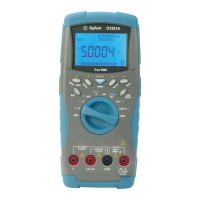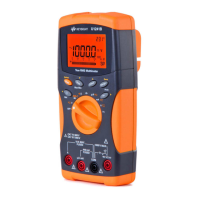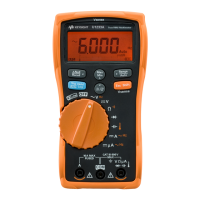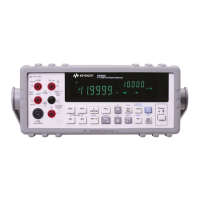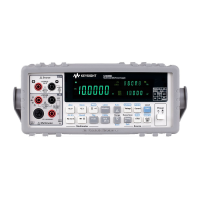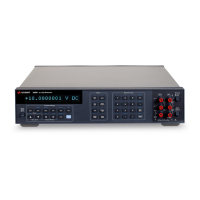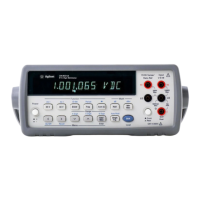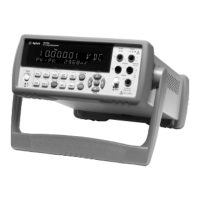38 Agilent U1251B/U1252B User’s and Service Guide
2 Making Measurements
Testing Diodes
To test a diode, turn the power off to the circuit and remove
the diode from the circuit. Set up the multimeter as shown
in Figure 2- 10, then use the red probe lead on the positive
terminal (anode) and use the black probe lead on the
negative terminal (cathode) and read the display.
Next, reverse the probes and measure the voltage across the
diodes again as shown in Figure 2- 11 on page 40. The
diode’s test result is based on the following:
• The diode is considered good if the meter displays “OL”
in reverse bias mode.
• The diode is considered shorted if the meter displays
approximately 0 V in both forward and reverse bias
modes, and the meter beeps continuously.
• The diode is considered open if the meter displays “OL”
in both forward and reverse bias modes.
Disconnect the circuit power and discharge all the high-voltage capacitors
before testing the diodes to prevent any possible damage to the meter.
• The cathode is the side with band(s).
•
The meter can display the diode’s forward bias of up to approximately
2.1 V. A typical diode’s forward bias is between the range of 0.3 V to
0.8 V.
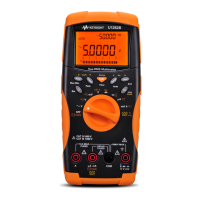
